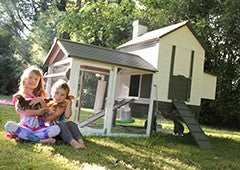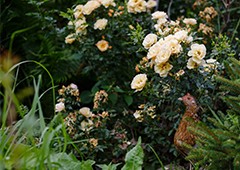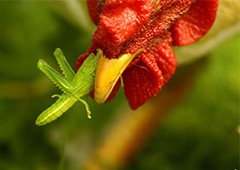There’s an odd sort of satisfaction when you nurture your own compost - we get so excited at the sight of our rich black gold fermenting in our compost bin...so good we could eat it! (Almost)
If you're a first time compost enthusiast and are ready to get your hands dirty making this nourishing plant food, you’ll first need a compost bin to put all the goodness in!
What makes a good compost bin?
Having the right bin for your black gold can mean the difference between waiting weeks for your compost to cook, or waiting months. Those who want to start experiencing the fruits of fresh, healthy plants asap will definitely want the former!
Here are some prerequisites for a functional compost bin that’ll have your black gold cooking in no time.The bin needs to have decent depth to it
Having a bin that’s approximately 3 feet deep and also the same dimensions wide ensure that there’s enough space for your compost to start cooking. The compost needs a little wiggle room so the heat can spread evenly between the ingredients, hence why depth is so important!
There needs to be gaps for the air to circulate
In order for the compost to decay and cook, there needs to be air circulating through the bin. Some people drill holes in their compost bin which is an easy fix. Others use chicken wire to bridge the gaps between planks of timber - another great way to use this handy product!
So whether you’ve bought a compost bin or are making one, keep the gaps in mind. Otherwise the compost won’t cook properly, and be nutritious!

The building materials need to be rot resistant
Whatever you use to make your compost bin, it needs to be resistant to rot. You don’t want your bin collapsing halfway through, otherwise you're faced with the unpleasant task of moving the compost and picking the wood shards out!
Timber
A rot resistant timber like cedar is great for a compost bin - not only is it sturdy, it goes great with any rustic or natural garden theme. You can always put some chicken wire in between the gaps of the timber to ensure the compost doesn't fall out of the bin as well - more on that later, when we tell you how to build one!
Plastic
Plastic is also a fine material for a compost bin - many people give their rubbish bins a second life as a house for their rich compost! Plastic easily keeps the heat in and won’t be damaged by your simmering compost. Plus it’s super easy to clean if you need to! All you’ll have to do is drill a few holes in the plastic of the bin and the lid, so it’s easy for the compost to start cooking.
Concrete blocks
Got some concrete blocks lying around from your last DIY project or house reno? You can definitely use them to create a great compost bin for your black gold. A cinderblock composter will withstand the elements and is a more permanent bin solution for those who are in the composting game for the long haul!
Got a small garden? Why not use buckets!
Only got a small garden but still want to create your own compost? A small bucket with some holes and a lid is fine and dandy! Easy to toss your scraps and soil into, and made of sturdy plastic.
Want to make your own? Here’s how
Ok - so now we know what makes a good compost bin, how do we make one? Well, here’s a few different options that vary in difficulty and commitment.
A plastic compost bin
Here’s the simplest of the simple ways to make a compost bin. The instructions literally are:
-
Get a plastic tub with a lid
-
Drill a bunch of random holes around each side, including the bottom.
Voila! A compost bin. Just add soil, scraps and other compost ingredients, give a good shape and leave to cook.
A pallet compost bin
Instead of measuring each piece of timber and painstakingly screwing together so there’s enough gaps for aeration, why not use some timber pallets? The gaps are already made which saves you a ton of time!
Here’s a guide to building a pallet compost bin from Fabulessly Frugal that will indulge the DIY enthusiasts out there:
-
5 wooden pallets (the closer in size the better)
-
1 2″ L bracket (optional)
-
10-15 1″ L brackets
-
1″ and 2″ wood screws
-
2 sturdy hinges
-
1 hook eye door latch
-
Cordless or electric drill
-
Hand saw or electric Sawzall
-
Determine which pallet is going to be your base. Once we decided, we centered and attached the back panel with the 2″ L bracket and 2 1″ L brackets.
-
Select the two pallets that are most similar in size, and used them as the side walls. We attached the sidewalls to the back wall and the bottom of the sidewalls to the base, all with the 1′ L brackets.
-
To make the door, cut the front panel into two pieces. Use the Sawzall or hand-saw), to cut around 1/3 of the way up the pallet.
-
This allows you the ability to fix the bottom 1/3 piece in place and allow the top 2/3 piece to open with the hinges. Attach the bottom panel with the 1″ L brackets to both the sides and the base.
-
Attach the top piece with the two hinges on the right side of the pallet. To ensure that the door opens smoothly, temporarily placed a thin piece of wood between the bottom and the top pieces before screwing the hinges into place. That way the door won’t rub on the bottom piece. After the door was in place, attach the hook eye latch.
Slightly more effort, but you get a very functional and rustic design!
A quick note to remember - never use timber that has been treated or has come into contact with chemicals. This is not good for a healthy natural compost.
Composting (and keeping chickens!) is one of the best ways to keep a healthy garden, and there’s nothing more satisfying than turning our own rich black gold that we've nurtured. A great way to keep the garden organic and chemical free, whilst growing healthily.
As avid gardeners and chicken keepers, we all want to do an eggcellent job when caring for our backyard friends. There are just so many things to consider when becoming a chicken parent from health to nutrition. Many chicken keepers struggle to handle chicken health or behaviour issues, especially in the first few years of having a flock.
This is why I recommend Chickenpedia to all my readers. They have comprehensive online courses on everything you didn’t know you need to know and then some more! From healthcare to raising baby chicks to feeding and behavior, you’ll find beginner-friendly courses that’ll give you the knowledge and confidence to successfully look after your chickens.
As a member, you will get access to ALL their fantastic courses. No need to wing it, become the ultimate chicken eggspert! Check out Chickenpedia today!


















